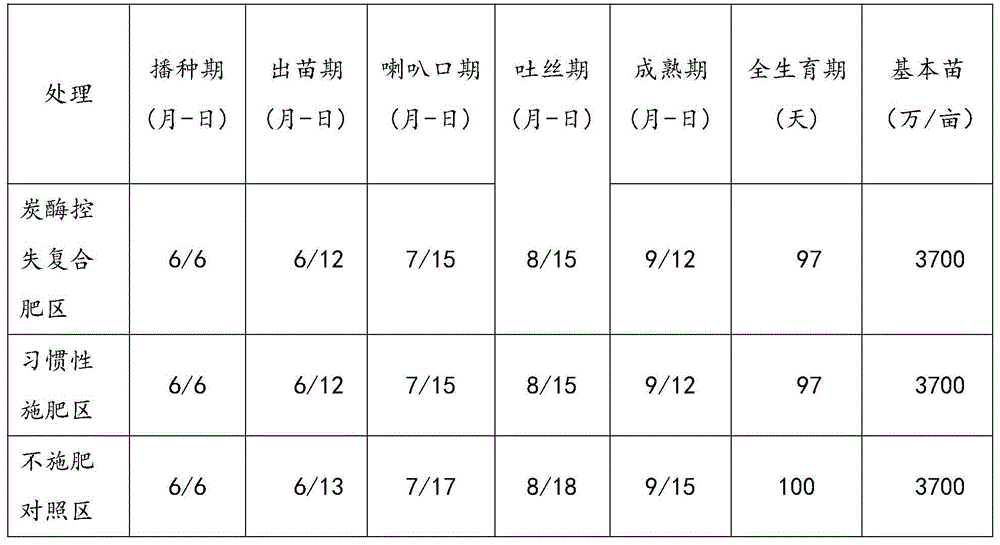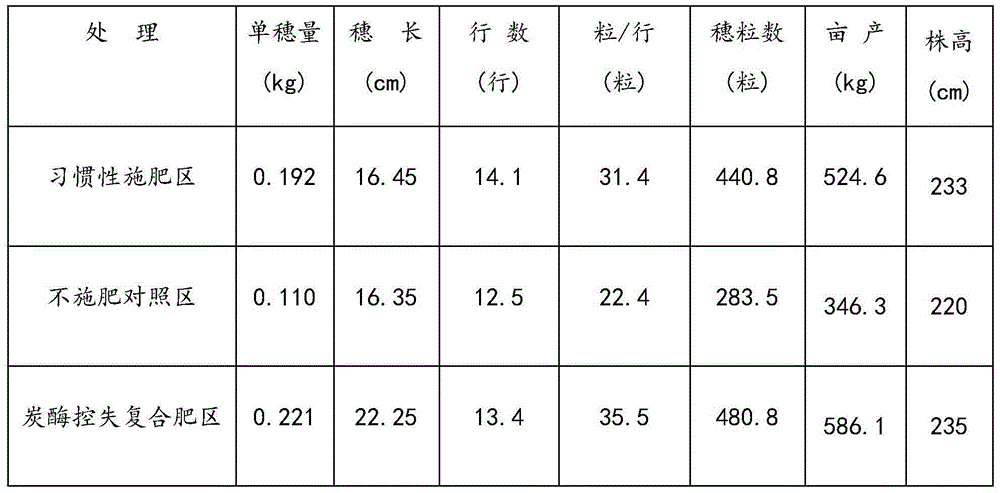Organic biochar enzyme inhibiting slow-release fertilizer and production method thereof
A carbon enzyme control loss, organic biology technology, applied in fertilizer mixtures, fertilization devices, agricultural gas emission reduction and other directions, can solve the problems of resource waste, environmental pollution, decline, etc., to improve soil, reduce environmental pollution, and increase crop yields Effect
- Summary
- Abstract
- Description
- Claims
- Application Information
AI Technical Summary
Problems solved by technology
Method used
Image
Examples
Embodiment 1
[0021] Organic biochar enzyme loss control fertilizer is prepared from the following raw materials in parts by weight: 10 parts of potassium sulfate, 10 parts of monoammonium sulfate, 40 parts of urea, 18 parts of ammonium sulfate, 10 parts of carbon enzyme control material, and 5 parts of humic acid , 7 parts of biochar powder;
[0022] The carbon enzyme control material is prepared from the following raw materials in parts by weight: 500 parts of polyaspartic acid, 400 parts of biochar powder, 5 parts of phosphorus-solubilizing bacteria, 5 parts of potassium-solving bacteria, 60-80 parts of nitrification inhibitors, urease inhibitors 60-80 doses.
[0023] The preparation steps are as follows:
[0024] 1. Preparation of biochar,
[0025] Take crop stalks, carbonize them, and then crush them into powder to make biochar powder;
[0026] 2. Preparation of charcoal enzyme-controlled materials,
[0027] First, add 500 parts of polyaspartic acid into the reactor, then add 400 p...
PUM
 Login to View More
Login to View More Abstract
Description
Claims
Application Information
 Login to View More
Login to View More - R&D
- Intellectual Property
- Life Sciences
- Materials
- Tech Scout
- Unparalleled Data Quality
- Higher Quality Content
- 60% Fewer Hallucinations
Browse by: Latest US Patents, China's latest patents, Technical Efficacy Thesaurus, Application Domain, Technology Topic, Popular Technical Reports.
© 2025 PatSnap. All rights reserved.Legal|Privacy policy|Modern Slavery Act Transparency Statement|Sitemap|About US| Contact US: help@patsnap.com


